DROPS Daisy
Everyday softness in pure merino wool
from:
3.32£
3.09€
Content: 100% Wool
Yarn Group:
B (20 - 22 stitches)
/ 8 ply / DK
Weight/length: 50 g = approx 110 m
Recommended needle size: 4 mm
Knitting tension: 10 x 10 cm = 21 sts x 28 rows
Care: Hand Wash, max 30°C / Dry Flat
/ Feltable
Superwash: no
Made in: Peru
Raw material origin: Wool from South America
This yarn has an Oeko-Tex® certification (certificate number 23.HPE.36896), Standard 100, Class II from the Hohenstein Institute. This means that is has been tested for harmful substances and is considered safe in human-ecological terms. Class II means the yarn is suitable to come in direct contact with the skin to a large extent, such as blouses, shirts, mattresses, etc.
DROPS Daisy is a soft, non superwash treated yarn, spun from 100% extra fine merino wool. The wool fibers used in this yarn are untreated, which means that they are only washed and not exposed to any chemical treatment prior to the dyeing. This enhances the wool's natural qualities, allowing the fibers to breathe better and providing better shape stability and texture quality.
Made from 4 strands spun together, which give the yarn extra elasticity, DROPS Daisy results in nicely defined stitches, being especially suitable for cable, structure and moss patterns. It is a great fit for patterns designed in DROPS Karisma, DROPS Lima, DROPS Cotton Merino and DROPS Merino Extra Fine (Yarn Group B).
The yarn’s special construction of fine and delicate fibers gives the garment a slightly sensitive surface, which makes the yarn better suited for finer garments, as opposed to sport jumpers. It is also extra important to treat the garment right: make sure that you knit with the correct tension - so use a tight tension rather than a loose one and follow the care instructions.
As in all our merino yarns, the merino wool for DROPS Daisy originates from free-range, mulesing-free animals from South America.
Read more about our products' sustainability here
Please be aware that the colours shown may vary from screen to screen in the same way that shades may vary slightly from dye lot to dye lot.
First of all, consider just airing the garment, instead of washing it. If you still desire to wash it, here are some guidelines:
- Hand wash at 30ºC - separately - with wool detergent without enzymes or optical brighteners.
- Don’t let the garment soak. Move the garment gently back and forth, do not rub or squeeze it.
- Rinse the garment until the rinse water is completely clear, making sure the water temperature stays uniform.
- Do a light centrifugation of the garment (about 800rpm), choosing a program that DOES NOT take in water at the start. Or press carefully the water out of the garment with a dry towel. The garment shouldn’t be twisted or rolled.
- To dry the garment, shape it and lay it flat - do not hang - ideally on a warm bathroom floor or on top of a drying rack in a room with good air circulation. Never dry the garment in direct sunlight.
- Don’t tumble dry.
Note: If you are washing a project made with this yarn combined with another, the general guideline is to follow the washing instructions for the most delicate of the yarns you are working with.
Do you have a question about this yarn?
See a list of frequently asked questions (FAQ) about our yarns.
1) What type of fibers make the DROPS yarns?
Yarn can be made from a large number of natural and synthetic fibers. DROPS carries mainly yarns made from wool, cotton, alpaca, linen, mohair and silk. Each fiber type has its own qualities, and they are often mixed to take advantage of the best properties of each one. Coarse yarn has the advantage of being stronger and more durable, and finer fibers offer more softness and comfort. Here a bit about the main fibers we carry:
Alpaca:
Alpaca fleece is the natural fiber harvested from an alpaca, and it is similar in structure to sheep wool fiber. Its softness comes from the small diameter of the fiber, similar to merino wool. It is a soft, durable, luxurious and silky natural fiber. Yarn made from alpaca fibers does not felt or pill easily, and it can be light or heavy in weight, depending on how it is spun. While similar to sheep’s wool, it is warmer, not prickly, and has no lanolin, which makes it hypoallergenic. Alpacas come in 22 natural colors, with more than 300 shades from a true-blue black through browns-black, browns, white, silver and rose-greys.
Mohair:
This fiber comes from the Angora goats, and it's considered a luxury fiber. Mohair yarn is warm as wool, but much lighter in weight; it is durable, dyes well and does not felt easily. Mohair fibers have also a distinctive luster created by the way they reflect light. Despite being a hard fiber, mohair is usually spun into a very fluffy yarn, resulting in airy and lustrous garments.
Wool:
The wool fibers come from the skin of sheep and are relatively coarse fibers. Two striking characteristics of wool are its susceptibility to heat and its felting property, which is caused by the scales on the surface. Depending upon the breed of sheep, the appearance of the wool varies.
Wool from Merino sheep is considered the finest type of wool, having as characteristics that is finely crimped and soft. All the Merino wool in the DROPS yarns has its origins in South America, coming from sheep that have not been subject to Mulesing.
Pure new wool is wool made directly from animal fleece, and not recycled from existing wool garments.
Machine washable wool is wool treated chemically to minimize the outer fuzzy layer of the fibers, and be therefore fitable for machine wash (see Superwash).
Silk:
The silk fiber is a fine continuous fiber produced from the cocoon of a moth caterpillar known as the silkworm. While silkworm is cultivated, the wild or tussah silk is obtained from uncultivated silkworm cocoons. Silk fiber is one of the strongest natural fibers and makes a wonderful knitting yarn. It blends really well with other fibers, especially wool. Silk also dyes beautifully with natural dyes.
Vegetable fibers:
There are several varieties of vegetable fibers, found in the cell walls of plants or vegetables. Of all the varieties, two are recognized as major knitted or textile fibers. They are cotton and linen.
Cotton is the fiber surrounding the seeds in a cotton pod, and it is almost pure cellulose. Cotton is usually white in color but there are green and brown varieties as well. The cotton fiber is most often spun into yarn or thread and used to make a soft, breathable textile that is good for summer clothing and accessories, making a weaker yarn than silk or linen but stronger than wool.
Mercerized cotton is cotton that has been through a mercerization treatment. This treatment gives cotton fabrics and threads a lustrous yarn that is more lustrous than conventional cotton. It is also stronger, takes dye a little more readily, makes the yarn more resistant to mildew and reduces lint. It also may not shrink or lose its shape as much as "regular" cotton.
Linen is a fiber derived from the stalk of the flax plant that is durable and stronger than any other fiber. The linen fiber is relatively soft, straight and lustrous and becomes more beautiful with age. Linen is more comfortable to wear in hot temperatures than cotton, due to the fact that it absorbs moisture better and dries more quickly.
Other materials used in our yarns include synthetic fibers such as acrylic, viscose, polyamide (nylon) and polyester. These fibers are used mostly to give strength to a yarn (like our sock yarn, DROPS Fabel) or a special kind of structure (like our blown yarn, DROPS Air).
The polyamide fibre, commonly known as nylon, is very strong, durable, lightweight, easy to care for (can be machine washed and dried), and elastic, which makes it perfect for blending with other fibres to produce hard-wearing yarns like sock yarn.
Compared to polyester, polyamide is softer and more flexible, but it also absorbs more water and dries slower.
3) What type of information can I find on the DROPS yarn labels?
All DROPS yarn labels include information about fiber content (wool, cotton, etc.), weight in grams and ounces, length in meters and yards, washing instructions and symbols (explained here), color number, dye lot number and yarn group information.
4) What are the DROPS yarn groups?
All DROPS yarns are classified into 6 different thickness groups (A to F). Yarns in a same group have similar knitting tension/gauge, and can therefore be interchanged in patterns; however the length may be different, so when substituting always calculate the amount of meters/yards needed for the pattern to know the amount of yarn you need to get.
5) Can I use a different yarn than the one mentioned in the pattern?
Yes, as long as the yarn can be worked in the same knitting tension/gauge. Always swatch to make sure you get the same number of stitches in width and rows in height as given in the pattern.
Remember that different yarns with different textures, will give the garment different looks. The yardage/length may also be different, so when substituting always calculate the number of yards needed, in order to know the amount of yarn you need.
Read more about how to calculate the amount of an alternative yarn - and how to replace 1 thread of a yarn with 2 or more of another, here.
6) What does it mean when a yarn is “Superwash”?
A superwash wool is a special wool product that has been treated or processed in a way that allows it to be machine washable. Many people are afraid to work with wool because it is so easy to shrink (though some shrink wool on purpose) and superwash wool can allow them to work with great fibers without worry. (Read more here).
7) What does “Oeko-Tex® certified” means?
The Oeko-Tex® Standard 100 was introduced at the beginning of the 1990s as a response to the needs of the general public for textiles which posed no risk to health. The Oeko-Tex® Standard 100 is a globally uniform testing and certification system for textile raw materials, intermediate and end products at all stages of production. The test for harmful substances comprise substances which are prohibited or regulated by law, chemicals which are known to be harmful to health, and parameters which are included as a precautionary measure to safeguard health.
For more info go to www.oeko-tex.com
10) How accurate are the colours on the shade cards online?
When obtaining images for the shade card, we do our best to achieve the highest level of color accuracy. Unfortunately, we cannot guarantee how images will appear on your computer screen. Every monitor displays color differently, some colors might look darker than they really are, and some colors might be more saturated on some screens. If you experience that many of the yarn colors looks different on your screen than the actual color of the skeins, you can adjust the setting on your monitor.
11) What is a micron? What does super fine / extra fine mean?
The fineness of yarn fibers is measured in microns (thousands of millimeters). Super fine alpaca wool is 26-28 microns. Fine merino wool is less than 21.5 microns and extra fine merino is under 19.5 microns. The less microns the softer and more delicate a quality can be, the more microns the more hard wear the quality will be.
The reason why the microns in a yarn’s fibers are important is that the yarn will eventually become something else, and how delicate or coarse a yarn is will determine in part what we use it for. That’s why we recommend the softest yarns (like DROPS Baby Merino) for baby clothing, or why we choose to use a more hard wear yarn like DROPS Snow, for a seating pad or slipper.
12) Why are the colours in my skeins of print yarn different?
The reason why two skeins of a same print yarn look different can be 1) that both skeins are part of different dye lots; 2) that the skeins have been dyed using a technique called "magic print" (the one used for example in DROPS Delight), which provides unique patterns and smooth colour transitions to each skein, meaning also that within one dye lot, lighter or darker varieties might appear. This is no fault or defect, but part of the yarn's character.
13) My store doesn’t have the colour I want, what can I do?
If your DROPS store doesn’t have the yarn colour you want, try contacting a DROPS Super Store (the ones with the golden badges) - they will make sure to get a hold of the colour even if they don’t have it in stock themselves. See a list of all DROPS stores here.
14) Where can I find a specific dye lot of a colour?
Always try contacting your DROPS store first. If they do not have the dye lot you want we recommend you to ask other knitters and crocheters in the DROPS Workshop in Facebook or Ravelry, which may have the dye lot in their stash and might be willing to part from it.
Yarn sheds because there's not enough twist to hold all of the fibers together. All yarns have excess fibers (from production) that might come off as lint or shedding, in varied degrees that depend on how the yarn is spun. Brushed yarns ("hairier" yarns) like DROPS Melody, have more of these loose fibers than other yarns, and therefore shed more. Shedding also depends on what is worn under or over the garment, and whether this pulls at the yarn fibers. It’s therefore not possible to guarantee that there will be no shedding.
Below are some tips on how to get the best result when working with hairier yarns:
- When the garment is finished (before you wash it) shake it vigorously so the looser hairs come off. NOTE: do NOT use a lint roller, brush or any method that pulls at the yarn.
- Place the garment in a plastic bag and put it in your freezer - the temperature will cause the fibers to become less attached to each other, and excess fibers will come off easier. Leave in the freezer for a few hours before taking it out and shaking it again.
- Wash the garment according to the instructions on the yarn label. Garments worked with hairier yarns usually need to be shaken once dry after washing, so that the hairs rise and any excess fibers can come off.
Pilling is a natural process that happens to even the most exclusive of fibers. It's a natural sign of wear and tear that is hard to avoid, and that is most visible in high friction areas of your garment like a sweater's arms and cuffs.
You can make your garment look as new by removing the pilling, using a fabric comb or a pill/lint remover.
How can I replace this yarn?
If you are looking to replace this yarn with another DROPS yarn, you can use another yarn within the same yarn group, or try our yarn converter!
Comments / Questions (15)
![]() Diamond wrote:
Diamond wrote:
What’s the difference between Light Lavender & Sweet Orchid? I understand Lavender is discontinued, but still being sold online, so I’d like to know so I can make an informed decision
30.09.2024 - 17:50DROPS Design answered:
Dear Diamond, there is a slightly difference in the colour - feel free to ask your DROPS store, they will help you finding the best matching colour, even per mail or telephone. Happy knitting!
01.10.2024 kl. 10:19
![]() Elena wrote:
Elena wrote:
Love the yarn combinations tab! Please consider combining different colours of the same yarn. I.e. I'd be curious to see how marzipan and off-white or light grey and marzipan look together. Thank you
24.09.2024 - 15:21
![]() Jutta wrote:
Jutta wrote:
Können Sie mir bitte sagen, wie sich das Garn beim Filzen verhält. Mit welcher Nadelstärke sollte ich stricken und wie sehr läuft das Strickstück ein.
20.01.2024 - 18:29DROPS Design answered:
Liebe Jutta, wir haben bis jetzt noch keine Erfahrung dafür, am besten stricken Sie Ihre eigenen Maschenprobe und filtzen Sie sie danach, so wissen Sie genau wie Sie machen können. Viel Spaß beim stricken!
23.01.2024 kl. 13:31
![]() Loredana wrote:
Loredana wrote:
Ho lavorato tanti filati drops e, purtroppo, devo dire che Daisy non è tra i miei preferiti, produce una quantità infinita di pilling, sicuramente sarà dovuto alla struttura non sapere dire, certo non è piacevole indossare un capo e dopo 5 minuti trovare una miriade di pallini.
10.01.2024 - 08:02
![]() Vanessa wrote:
Vanessa wrote:
Worin besteht denn der Unterschied der Daisy zur Drops Merino Extra fine? Die Lauflänge ist fast gleich, die Maschenprobe auch beide Garngruppe B Ist ein Garn weicher oder anders versponnen? Wo ist der Unterschied ich möchte einen Kinderpulli stricken und frage mich welches das Geeignetere Garn ist. LG Vanessa
05.12.2023 - 19:33DROPS Design answered:
Liebe Vanessa, Daisy ist keine Superwash Wolle wie Merino Extra Fine und wird mit 4 Fäden versponnen, dh wie Karisma. Viel Spaß beim stricken!
06.12.2023 kl. 09:18
![]() Martina wrote:
Martina wrote:
Ab wann ist denn die Farbe Salbeigrün 26 wieder verfügbar?
04.11.2023 - 17:35DROPS Design answered:
Liebe Martina, diese Farbe ist bei uns verfügbar, fragen Sie mal direkt Ihr DROPS Händler, dort wird man Ihnen bescheid sagen, wenn sie diese Farbe wieder haben. Viel Spaß beim stricken!
06.11.2023 kl. 09:29
![]() MARTIN wrote:
MARTIN wrote:
Bonjour, prévoyez-vous une laine non Superwash comme Daisy mais de catégorie A ? Ce serait si bien ! Merci
16.09.2023 - 09:12
![]() LAETITIA SURIRAY wrote:
LAETITIA SURIRAY wrote:
Bonjour, combien faut il de pelotes pour un pull femme xxl? Merci
13.09.2023 - 18:09DROPS Design answered:
Bonjour Mme Suriray, tout va dépendre de la forme du pull, de son ampleur, du point utilisé, de la tension, etc..; retrouvez ici tous les modèles de pulls femme du groupe de fils B que vous pouvez également réaliser en Daisy - pensez à utiliser le convertisseur pour calculer la nouvelle quantité pour votre taille. Bon tricot!
14.09.2023 kl. 10:04
![]() Susanne wrote:
Susanne wrote:
Das neue Daisy ist in Pastellfarben gelb, ros und hellblau abgebildet. Welche Farbnummern sind das genau. Wieviel brauche ich bei 3 Farben für einen Blockstreifenpulli in Gr. 42 lang. Danke Susanne
10.09.2023 - 13:53DROPS Design answered:
Liebe Susanne, es sind Farben Nr 06-16-09. Viel Spaß beim stricken!
12.09.2023 kl. 11:51
![]() Katja wrote:
Katja wrote:
Ich habe Drops sky oder air verstrickt, da diese wirklich nicht kratzt. Ist das bei daisy auch der Fall?
08.09.2023 - 17:11DROPS Design answered:
Liebe Katja, Unser DROPS Daisy ist weich aber jede empfinchkeit ist anders, am besten lassen Sie ich von Ihrem DROPS Händler (auch per E-Mail oder Telefon) beraten. Viel Spaß beim stricken!
11.09.2023 kl. 10:28
![]() Susi wrote:
Susi wrote:
Mir ist auch nicht klar, was Daisy ohne Superwash für eine Alternative zu Merino Extra Fine sein soll ? Die Vorteile und die Unterschiede werden im Text so nicht klar... Der Unterschied ist nur, daß ich sie nicht in der Maschine waschen kann. Was ja eher ein Nachteil gegenüber Merino Extra Fine ist...
07.09.2023 - 10:53
![]() Sylvie wrote:
Sylvie wrote:
Bonjour, Quelle différence entre Daisy et Merinos extra fine ?
30.08.2023 - 23:10DROPS Design answered:
Bonjour Sylvie, DROPS Daisy n'est pas traitée Superwash comme l'est Merino Extra Fine, et elle est filée à partir de 4 fils, comme Karisma. Bon tricot!
31.08.2023 kl. 16:09
![]() Anette wrote:
Anette wrote:
Glæder mig til at strikke med dette garn. Vides det, hvornår det kommer i handelen?
29.08.2023 - 15:35DROPS Design answered:
Hej Anette. Vi har börjat skicka ut det till våra forhandlere så inom några dagar ska du kunna köpa det. Mvh DROPS Design
30.08.2023 kl. 12:01
![]() Emma wrote:
Emma wrote:
Such pretty colours!
28.08.2023 - 14:04






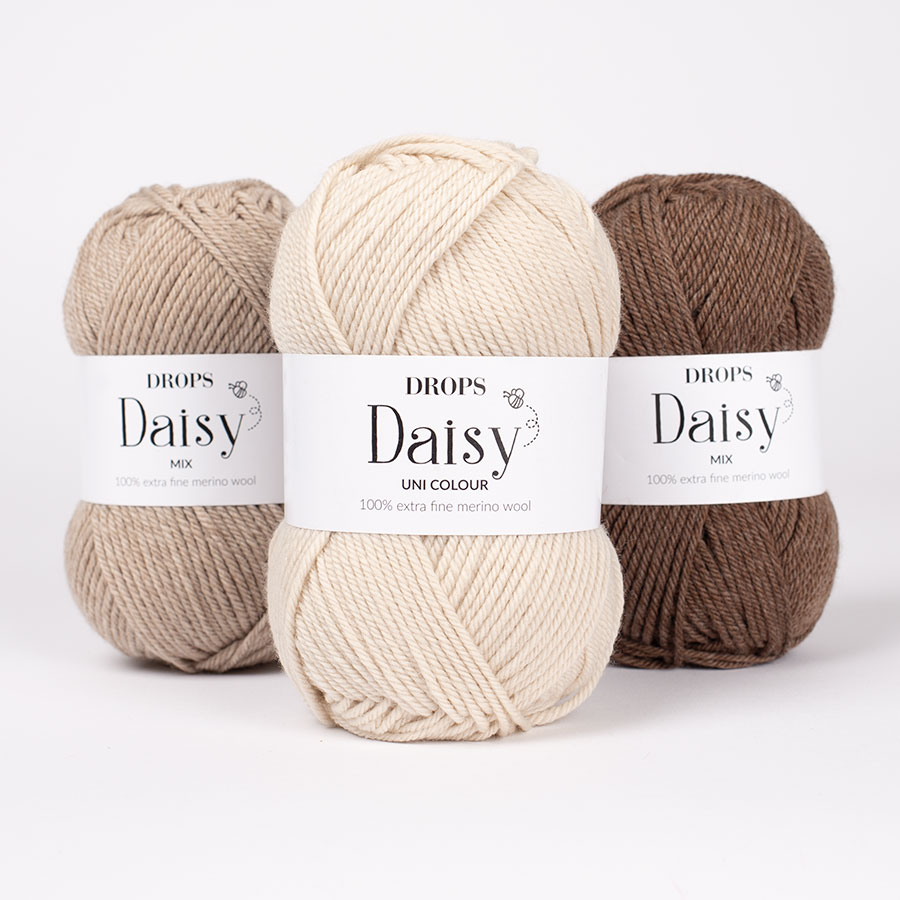
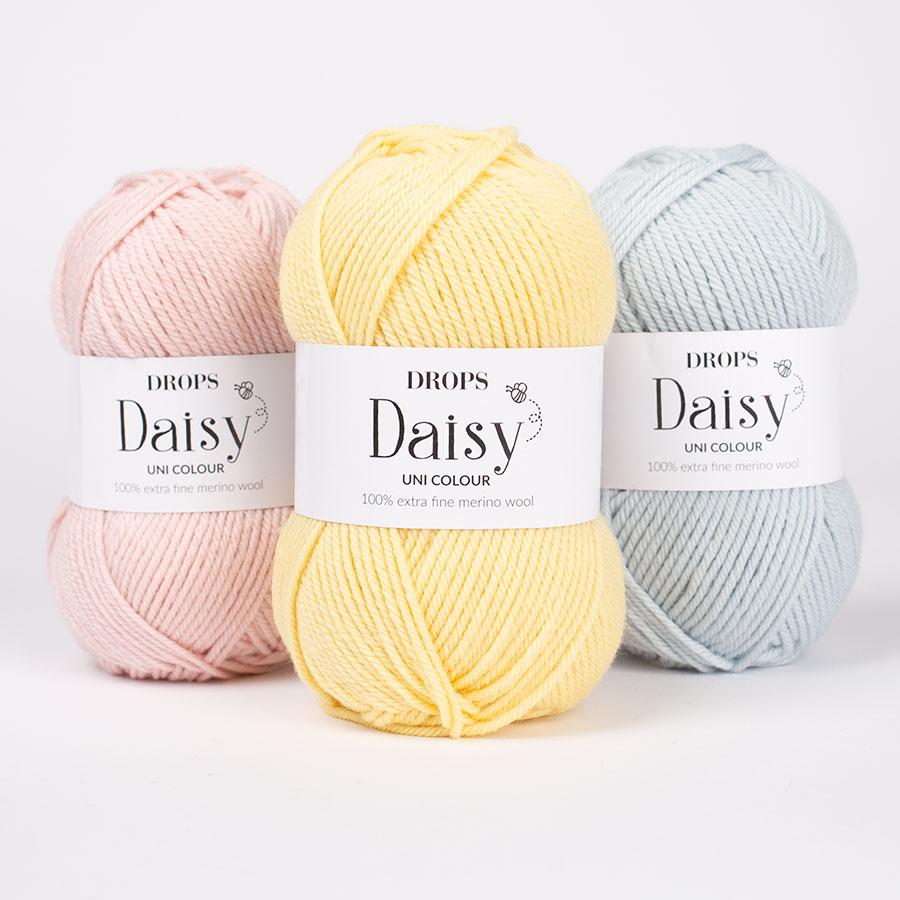
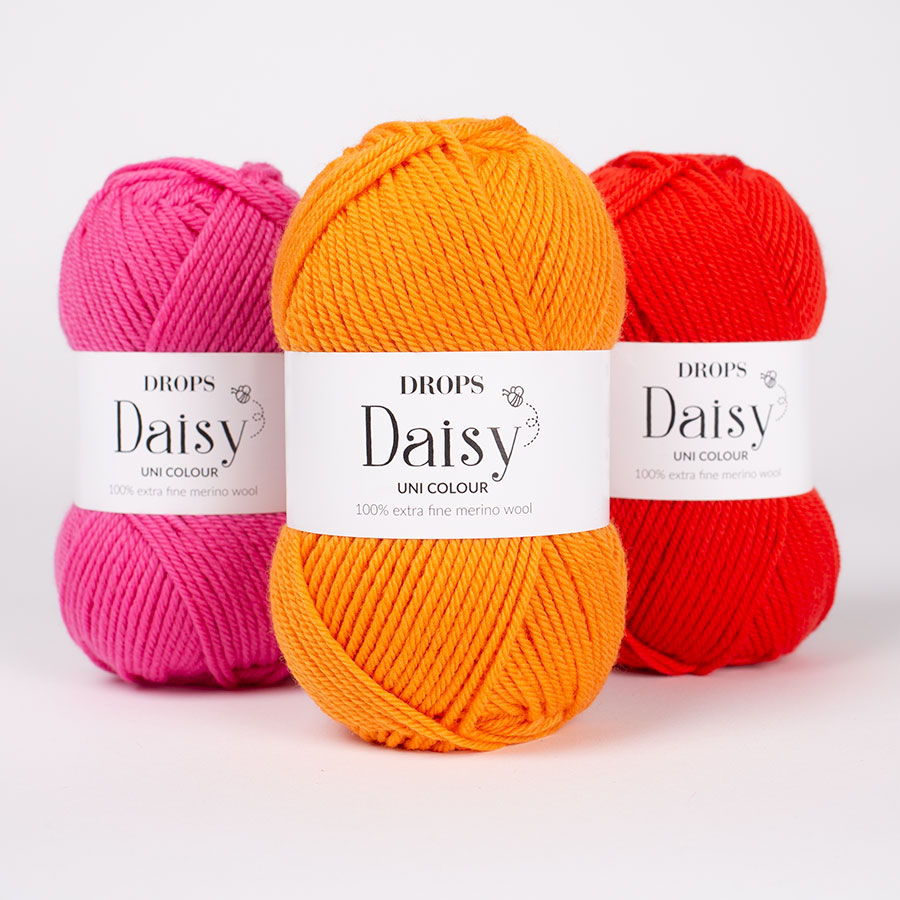

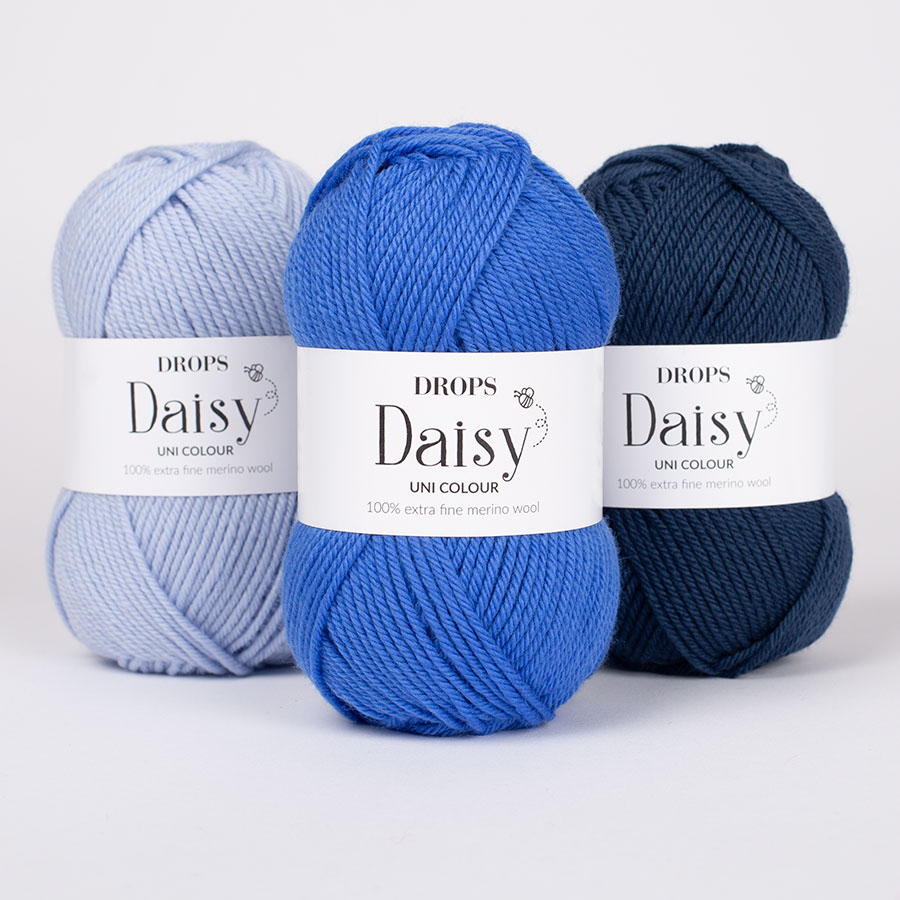
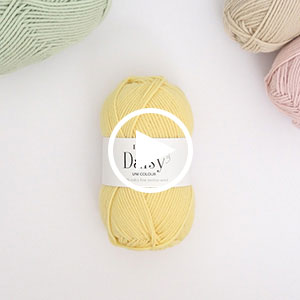




























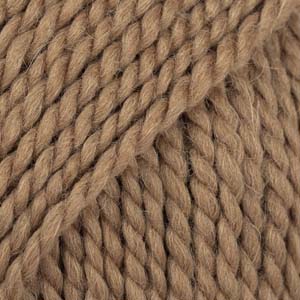



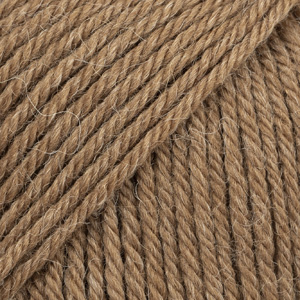














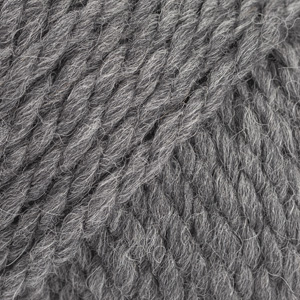












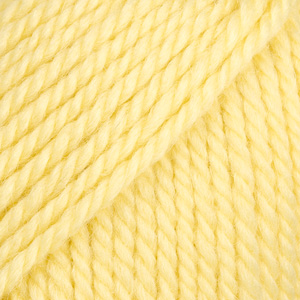

























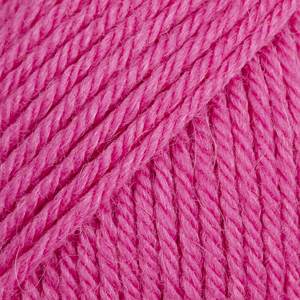









































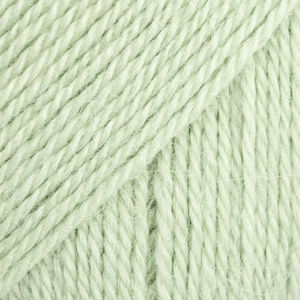






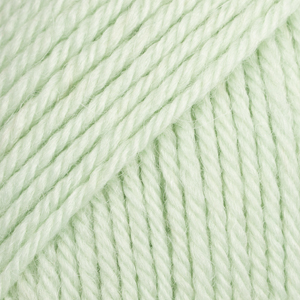


















































This yarn is one of the best merino yarns that I have ever tried, super-wash or not. Drops Daisy is very soft, much softer than the Merino Extra Fine that I have also tried and used for a sweater! I recommend this yarn for anyone who is very sensitive to wool yarns. I actually prefer to hand wash my knits over using super-wash. I have not experienced any pilling with this yarn yet, and I will probably buy it again in the future. Lovely yarn!
27.09.2024 - 21:50